|
The Religious Land Use and Institutionalized Persons Act (RLUIPA) is a multifaceted law. It protects the rights of prisoners to religious expression and the rights of houses of worship to be free of burdensome impositions by the government.
Protect The 1st has invoked RLUIPA in asking the U.S. Supreme Court to recognize the rights of a condemned man to have his pastor lay hands on him while he is being executed. And we have invoked RLUIPA in asking the Ninth Circuit to spare the long-acknowledged sacred lands of the Apache people from being uprooted by a foreign mining company. These are just some of the important religious liberty cases touched by RLUIPA. It is with gratitude, then, that we note that the U.S. Department of Justice is celebrating the 23rd anniversary of the signing of RLUIPA with a public awareness campaign, from online resources to special events around the country. The first outreach event on RLUIPA will be held at Seton Hall Law School in Newark, New Jersey, on Oct. 30. This event will include remarks from officials from the Justice Department Civil Rights Division, the U.S. Attorney’s Office of New Jersey, attorneys, and religious leaders representing the wide spectrum of worshippers who’ve been protected by RLUIPA over the years. “We are pleased to see Attorney General Merrick Garland and the Justice Department go the extra mile in making sure the public understands this important law,” said Rick Boucher, Senior Policy Advisor for Protect The 1st and former Congressman from Virginia. Ninth Circuit Slaps Down School District’s Shut Down of the Fellowship of Christian Athletes – Again9/27/2023
The long-running effort by the San Jose Unified School District to keep the Fellowship of Christian Athletes (FCA) from being a recognized student club is finished. The FCA is now allowed back on campus for after-hours school meetings, just like any other recognized student organization.
This case revolved around the FCA’s requirement that students adhere to Christian teachings. A teacher, later portrayed by a federal judge as launching an “inquisition” against the FCA, drilled down into FCA websites to discover that this Christian organization holds the same position on marriage as, unsurprisingly, many Christian dominations. After an onslaught of personal attacks on the FCA and its student-members coordinated by faculty, the FCA was kicked off San Jose campuses. The FCA sued. After winning a lower court ruling, the school district lost in 2022 before the Ninth Circuit Court of Appeals. In a sharp rebuke, Judge Kenneth E. Lee – one of two judges on the three-judge panel that decided for the FCA – wrote that the school district “portrays a stench of animus against the students’ religious beliefs.” Undeterred, the school district doubled down and asked for a hearing before an en banc panel of the Ninth Circuit, in which 11 judges would hear the district’s justification for the removal of this student club. That decision came down this month. The Ninth Circuit ruled that “anti-discrimination laws and the protections of the Constitution work in tandem to protect minority views in the face of dominant public opinion.” The court also said the District had regrettably used a discriminatory “double standard” against the FCA that failed to treat “FCA like comparable student groups” and instead “penalized it based on religious beliefs.” The Ninth Circuit’s opinion held that just as high schools’ Senior Women club has all-female members, or the honors clubs sets standards of “good moral character” for their members, so too does it make “equal sense that a religious group be allowed to require that its leaders agree with the group’s most fundamental beliefs.” The court concluded that the First Amendment counsels “mutual respect and tolerance for religious and non-religious views alike.” We would only add that the use of lawfare to cancel this group or that group is inimical not just to the U.S. Constitution, but to respect for pluralism that is at the heart of the American ideal. Starting next year, every family in North Carolina will have the option to send their children to the school of their choice.
On Friday, the North Carolina General Assembly approved in the state budget a nearly 300 percent funding increase for its Opportunity Scholarship program, which since 2013 has offered vouchers for lower income students to attend private schools. At the same time, the legislature eliminated all income-based restrictions for the school choice initiative, meaning that every young person in the state who wishes to attend a private educational institution will now be able to do so (though scholarship amounts decline with higher income levels). Meanwhile, state employees – including public school teachers – will receive a seven percent raise. North Carolina adds to evidence from Illinois – where public school funding is up by almost $2 billion despite a (now-endangered) tax credit for donations to private schools – that educational choice is not a zero-sum game. North Carolina’s action makes it the tenth state in the nation to offer universal school choice. Governor Roy Cooper announced that he will back off a threat to veto the funding. The program’s future is all but guaranteed. School choice offers families the chance to create better lives for the next generation. It allows parents to choose a school that fits their child’s particular needs and reflects their own values – options Protect The 1st believes empower parents to exercise their First Amendment rights by extending their standards and values across generations. Moreover, it provides a hopeful alternative for those children relegated to under-performing public schools. Protect The 1st applauds the North Carolina General Assembly and congratulates Tar Heel State parents, who will no longer have to choose between an empty bank account and limited options in educational choices for their children. Our eyes turn next to Texas, where Gov. Greg Abbott intends to call a special legislative session next month to address this same issue. Will Texas become the 11th state? Stay tuned. Protest can be uncomfortable. It’s often meant to be. From the very outset of our American experiment, protest was a means of shaking up the status quo and communicating hard truths – dating back to the 1688 Germantown Quaker petition against slavery and continuing today through the Black Lives Matter movement.
This tradition is fully protected under the First Amendment, though sometimes local authorities can lose their way under pressure and cave to censorial instincts. Take the case of Dr. Faraz Harsini and Daraius Dubash, two animal welfare advocates prevented by local authorities from exercising their right to free speech in Houston’s downtown Discovery Green Park. Both immigrants to the United States, Harsini and Dubash are members of Anonymous for the Voiceless, a grassroots advocacy group dedicated to combating animal cruelty. Dr. Harsini, a cancer and infectious disease expert, fled Iran after nearly being killed for protesting against the government. Dubash comes from India, where people enjoy substantially fewer free speech protections than in the United States. But it wasn’t until Dubash came to the United States that he was arrested for peaceful advocacy. Here’s the backstory: In the summer of 2022, Harsini and Dubash held an educational series in Discovery Park. This park has a long history of protest, without incident hosting pro-choice protests, anti-NRA protests, LGBTQ demonstrations and more. In the eyes of authorities, however, Harsini and Dubash went too far when they held a “Cube of Truth” – a bodily held television screen playing excerpts from the film Dominion, which documents factory farming practices. Looking at the screen – small enough for a protestor to hang on a harness – could be easily avoided by passersby. The two men were respectful, only speaking to passersby who engaged with them first. Yet nearly every time Harsini and Dubash visited the park, police asked them to leave at the request of park management (Discovery Green Conservancy), which found the documentary’s content “offensive.” Each time they complied – until Dubash finally explained his First Amendment right to be there to the police. Police arrested Dubash for his troubles and charged him with criminal trespass. The district attorney subsequently dismissed the charges. Now, the Law & Religion Clinic at the University of Texas and the Foundation for Individual Rights and Expression (FIRE) are bringing suit against the City of Houston, the Discovery Green Conservancy and two individual police officers for First and Fourth Amendment violations. As the U.S. Supreme Court recognizes, public parks – like public sidewalks – have long been places for “assembly, communicating thoughts between citizens, and discussing public questions.” In their communications with Harsini and Dubash, police argued that Discovery Green is a private park – an assertion that is false on its face. The City of Houston acquired the land and principally funded the park’s creation. Its “Covenants as to Use” state that “[s]uch property shall be used solely as an urban public park of high quality, reputation and natural beauty.” The fact that the city contracts with the private Discovery Green Conservancy for management does not absolve them from violating the First Amendment. Authorities’ assertion that the documentary’s content is “offensive” is unlikely to get them off the hook, either. Protest speech can be offensive, it just can’t be obscene. In 1972, the Supreme Court laid out a tripartite test for determining whether speech falls into that unprotected category. Courts now evaluate: 1) whether “the average person, applying contemporary community standards” would find that the message appeals to “prurient interest,” (2) whether the work depicts or describes, in a patently offensive way, sexual conduct specifically defined by the applicable state law, and (3) whether the work, “taken as a whole,” lacks serious literary, artistic, political, or scientific value. In the case of Harsini and Dubash, the images they depicted are of standard, lawful industrial meat production practices. Those images may be upsetting. That’s the point, and one can hardly argue they lack serious political value in the context of an ongoing national debate about farm animal welfare. As such, Houston authorities cannot justify this content-based censorship. Houston might do well to follow the lead of the D.C. Circuit Court, which has repeatedly upheld the rights of citizens to speak freely on the U.S. Capitol grounds, rejecting arguments that they are a “special type of enclave” immune from the guarantees of the First Amendment. In cases like Jeannette Rankin Brigade v. Chief of Capitol Police and Lederman v. United States, that court has repeatedly shot down, on the basis of their very public character, the idea that those grounds constitute a nonpublic forum. Similarly, a well-designated public park that has traditionally held demonstrations cannot suddenly be deemed private based on an official’s subjective interpretation of what is offensive. Constitutional law will make that determination and will, more than likely, vindicate Harsini and Dubash in the process – and their right to display their Cube of Truth. Earlier this summer, we wrote about an opinion and order issued by Judge Terry Doughty of the U.S. District Court for the Western District of Louisiana in the case of Missouri v. Biden. The controversy stemmed from accusations of government censorship and viewpoint discrimination against speech – under both the Biden and the Trump administrations – most notably social media posts related to COVID-19.
The plaintiffs argued that the government pressured social media platforms to such a degree that it interfered with the First Amendment right of the platforms to make their own content moderation decisions. Judge Doughty agreed. The district judge’s controversial order enjoined the White House and a broad range of government agencies from engaging in a wide array of communications with social media platforms, with 10 separate provisions laying out the parameters. The administration appealed to the Fifth Circuit, which stayed the injunction. Now, a three-judge panel from the Fifth Circuit has weighed in. Broadly, they side with Judge Doughty’s finding that the White House, the Surgeon General’s office, the FBI, and the CDC either coerced or significantly encouraged social media platforms to moderate protected speech. At the same time, the court significantly reduced the scope of the injunction order, striking nine out of the 10 prohibitions for vagueness, overbreadth, or redundancy. Further, the court found that a range of enjoined parties – including former NIH Infectious Disease Director Anthony Fauci and the State Department – did not engage in impermissible conduct. What we are now left with is a much narrower new injunction with a single prohibition reading as follows: “Defendants, and their employees and agents, shall take no actions, formal or informal, directly, or indirectly, to coerce or significantly encourage social-media companies to remove, delete, suppress, or reduce, including through altering their algorithms, posted social-media content containing protected free speech. That includes, but is not limited to, compelling the platforms to act, such as by intimating that some form of punishment will follow a failure to comply with any request, or supervising, directing, or otherwise meaningfully controlling the social-media companies’ decision-making processes.” Unsurprisingly, the Biden administration is appealing the ruling – this time to the highest court in the land. The U.S. Supreme Court granted the administration’s request for an administrative stay of the Fifth Circuit injunction as the administration prepares to file a petition for certiorari by Oct. 13 (which would allow the Supreme Court to hear the controversy this term). While it is at least reasonably likely that the Court will agree to hear this case, we stand by our prior position on the issue – that questions surrounding the limits of government interaction with social media companies merit a vigorous, informed public debate. We again urge Congress to hold bipartisan hearings to examine among other questions whether social media platforms find the communications with government to be unwelcome pressure or whether they find the information provided to be helpful. In order to combat a tide of Covid misinformation, in 2021 the White House began closely monitoring social media companies’ health related postings. The sense of urgency felt by federal officials was soon reflected in sometimes hyperbolic communications to the public that reflected the deep concern with a flood of harmful misinformation that they believed was getting in the way of the provision of accurate Covid related information to the public. In July 2021, at a White House presser, the Surgeon General accused social media companies of “enabl[ing] misinformation to poison” the public. Soon after, President Biden responded with his own comment about social media “killing people” and the White House publicly discussed legal options. Social media companies apparently understood the message, changing internal policies and making new efforts to deplatform users like the “disinfo dozen,” a list of influencers deemed problematic by the White House. Still, the administration continued its public messaging, with the White House Press Secretary at one point expressing explicit support for Section 230 reforms so the companies can be held accountable for “the harms they cause.” Of course, the government must be able to communicate freely to the public and with private companies, especially on matters of public health and safety. The parties released from the District Court’s injunction likely exercised that right appropriately. There is danger, however, when the government works with social media silently to remove content, with no public transparency, especially if there is a hint (or more than a hint) of coercion. What is that danger, exactly? Reasonable people agree there are public health messages that are irresponsible and harmful. But secret censorship, no matter the justification, is the royal road to a censored society. Protect The 1st hopes that congressional hearings and a high Court review will bring clarity on the question of government communications with social media, now America’s main public square. The Protect Reporters from Exploitive State Spying, or PRESS Act, now has strong bipartisan support, with 20 co-sponsors. This milestone comes shortly after the bill received unanimous support from the House Judiciary Committee back in July.
The breadth of support for this measure is impressive. It was introduced by Rep. Kevin Kiley (R-CA) and Rep. Jamie Raskin (D-MD). Co-sponsors range from Rep. Darrell Issa (R-CA), to Rep. Ted Lieu (D-CA), from Rep. Ben Cline (R-VA) to Rep. Zoe Lofgren (D-CA), from Rep. Harriet Hageman (R-WY) to Del. Eleanor Holmes Norton (D-DC). They support one answer to the following question: Should the government be free to dig into the records, notes, phone logs and emails of journalists or subpoena them into federal courts to catch a leaker? Their answer is a resounding “no.” Perhaps it is no coincidence that many of the sponsors hail from California, which has strong laws that protect journalists, their notes and by implication, their sources. The California Constitution and the California Evidence Code, as interpreted by the California Supreme Court, are “shield laws” that give broad protection to journalists’ notes and sources. Throughout the Golden State, reporters, editors, publishers, and others employed by all forms of media are immune from being held in contempt for protecting “confidential sources” and “unpublished information,” including their notes. Every state has such a law except for Wyoming. The federal government does not. As events spin into overdrive in Washington, D.C., Congressional leaders in both parties are coming to see the wisdom of following California’s example and tempering government actions by protecting the ability of journalists to get the straight, inside skinny from whistleblowers. Whistleblowers need the assurance that the reporter with whom they speak in confidence cannot be compelled to betray their trust. The PRESS Act protects journalists and their sources. The PRESS Act establishes a federal statutory privilege shielding journalists from being compelled to reveal confidential sources. It would also block attempts to compel disclosure of account information from communications services used by reporters. This is a reasonable bill, one that would allow the breaking of this privilege only in extreme circumstances. During the last Congress, the House approved the PRESS Act with a bipartisan, unanimous voice vote. Rep. Kiley said: “As acknowledged by America’s founders, the freedom of the press to report on and disseminate information is critical to our republic. Our bipartisan legislation further codifies these First Amendment principles into law and will mitigate infringement upon the Constitution by the federal government.” The acceptance of shield laws by the states shows that the principles of the PRESS Act are popular. At a time when trust is scarce, wouldn’t it be refreshing to see federal leaders in both parties pass a popular measure that enhances freedom and holds government accountable? Like so many issues, school choice is caught in the never-ending spin cycle of interest groups and partisan politics. This is a shame because low-income children in areas where public schools are faltering deserve better options. Protect The 1st sees school choice as especially important because it is helps parents fulfill the First Amendment’s free exercise of religion by having the option to send their children to private schools in their faith tradition.
But politics get in the way – and the rhetoric gets heated. In a recent interview, American Federation of Teachers president Randi Weingarten likened school choice advocates to 1950s-era segregationists. Her remarks did not land well. Referencing terms like “choice” and “parental rights,” Weingarten said: “Those same words that you heard in terms of wanting segregation post-Brown v. Board of Education, those same words you hear today.” One person who didn’t much care for Weingarten’s comparison was U.S. Sen. Tim Scott, who said in a Tweet (X post): “I can’t think of anything more racist than teachers’ unions trapping poor Black kids in failing school in big blue cities. Randi Weingarten, you’ve done enough damage.” Sen. Scott grew up Black and poor in South Carolina in a home where the electricity was often turned off. He credits a mentor and a good education – “the closest thing to magic in America” – with turning his life around. He has long been a defender of school choice, calling it “the civil rights issue of our time.” Like Sen. Scott, we believe that parents should have the opportunity to choose the education that best suits the specific needs of their children – whether it’s a public or private school, religious or secular. Suggesting school choice is some sort of Trojan horse for religious indoctrination perverts the issue, but that’s exactly what Weingarten did. Referring to school choice advocates, Weingarten said: “They want to have basically a Christian ideology, their particular Christian ideology, dominate the country, as opposed to a country that was born on the freedom of the exercise of religion.” Catholic League president Bill Donohue, like Sen. Scott, took issue with Weingarten’s comments, suggesting that she was engaging in “Christian bashing” (which, like pickleball, seems to be an increasingly popular national pastime). That hostility, by the way, overlooks the broad array of religious schools that are associated with all the great world religions, as well as private and charter schools with a more secular orientation. Some seem to have a complete disconnect with real-world reality. Look no further than Chicago Teachers Union president Stacy Davis Gates, who recently came under fire for sending her own child to private school. She should have every right to make that choice; it’s the hypocrisy that rankles. In 2022, Gates responded to Sen. Scott: “School choice was actually the choice of racists. It was created to avoid integrating schools with Black children. Now it's the civil rights struggle of our generation?” Perhaps it is more of a class issue. Gates can afford to send her child to a private school. An insightful piece from Rick Hess in EducationWeek takes on the idea that one must either be a stout defender of public education or of school choice. He writes “the vitriol is disconnected from what most families care about.” Hess notes that 7 in 10 parents are satisfied with their child’s experience in a public district school, while 7 in 10 also endorse educational savings accounts, school vouchers, and charter schools. Hess writes: “That’s the real promise of educational choice: It allows parents, educators, and students to blur the old lines and rethink the work of teaching and learning. It’d be a shame if that becomes lost amid the shouting heads and social media outrage.” School choice offers families the chance to express their values and create better lives for the next generation. We all want public schools to succeed, and we should welcome any opportunity to have a robust discussion on the issues. Educating our children should not be a partisan concern, and name-calling – as they taught us in school – is never the way to resolve our differences. Illinois’ Invest in Kids scholarship program, funded by private donations eligible for state tax credits, passed in 2017 with bipartisan support. State tax credits are a form of spending. So do teachers’ unions have a point when they claimed that the school choice program could reduce public school funding? New data prove that isn’t the case. Since the 2018-2019 school year, public education in the Prairie State has received a $1.98 billion increase, despite a 7.5% decrease in public school enrollment.
One-hundred and forty-seven thousand fewer students are today being educated by Illinois’ public school system since the 2018-2019 school year. And yet more money is being spent to do it. Scholastic outcomes in the public school system, meanwhile, are worse than ever. Since that time, math proficiency in 3rd through 8th grade students has dropped by six points, while reading proficiency dropped by eight points. Offering families (and particularly low-income families) the opportunity to choose a better education for their children is central not only to creating good citizens but safeguarding the guarantees of the First Amendment. Senator Tim Scott called it a “civil rights issue,” and he’s not wrong. School choice offers families with few means the chance to express their values and create better lives for the next generation. Yet Illinois recently opted not to renew the tax credits for donations to the Invest in Kids program, which is set to expire on December 31st. We urge Gov. J.B. Pritzker and the state legislature to reconsider during the fall session in Springfield – and recommit to offering struggling families a lifeline. They’ll hardly be alone in doing so. Today, 32 states and Washington, D.C., have private school choice programs. They can’t all be wrong. Research shows that for every student attending a private school, a state saves between $1,650 and $3,000. Ninety-six hundred students in Illinois rely on Invest in Kids – and there are 26,000 families on the waiting list. That’s one math problem that the governor and legislators can solve. The Foundation for Individual Rights and Expression (FIRE), in conjunction with College Pulse, published its fourth annual survey on free speech at colleges and universities around the country. The survey included over 55,000 students from 254 institutions.
Bottom line: No school on the list earned an “Exceptional” or “Very Good” rating. The best earned a “Good” speech climate rating. The top five universities in the country for their speech climates were Michigan Technological University, Auburn University, the University of New Hampshire, Oregon State University, and Florida State University. At the bottom of the pack is Harvard University, followed distantly by the University of Pennsylvania, the University of South Carolina, Georgetown University, and Fordham University. The University of Chicago, which previously held the top spot in 2020 and 2023, slid in the rankings this year, but this was mostly driven by the inclusion of considerably more schools. In fact, this year’s survey is the largest ever conducted by FIRE and College Pulse, up from just 54 institutions in 2020. Other universities that consistently rank highly include George Mason University, Purdue University, the University of Virginia, and Texas A&M University. Just because a school scores highly, though, doesn’t mean that students necessarily feel safe. When asked whether they self-censor often, 18% of students at the top five schools for freedom of speech reported that they do, whereas 20% of students at the bottom five schools said the same. Fifty-four percent of students at the top five schools reported worrying about damaging their reputation because of someone misunderstanding what they have done or said, whereas 57% of students at the bottom five schools reported the same. Overall, the average score on “Comfort Expressing Ideas” at the top five schools did not differ significantly from that of the bottom five schools. Far from being safe to express one’s beliefs at the top five schools, students at these institutions may only experience a moderately less hostile environment. This insight underscores how much work still needs to be done to make even the most tolerant American universities safe for academic freedom. Other facts from the report stand out. Students at the bottom five institutions were more biased against politically diverse speakers and were more accepting of disruptive or violent protests to stop a campus speech. Consequently, deplatforming speakers at these institutions was successful 81% of the time. More students this year (45%) compared to last year (37%) reported that blocking other students from attending a speech is acceptable to some degree. While opposition to a controversial conservative speaker appearing on campus was considerably higher (57% to 72%, depending on the speaker) than a controversial liberal speaker, controversial liberal speakers were still opposed by anywhere between 29% to 43% of the student body. Hostility to a speaker of a particular political persuasion may be more akin to a numbers game, rather than the domain of one particular ideology. For example, in 2021 at Florida State University, Dr. Meghan Martinez’s class “The History of Karen: Weaponizing White Womanhood,” the title of which leaves nothing to the political imagination, received significant backlash, causing the class to be removed from the course catalog. The report contains many more fascinating insights into the state of free speech across America’s institutions of higher learning. Protect The 1st congratulates FIRE and College Pulse for another informative and thoughtful list. Bipartisan support for the Protect Reporters from Exploitive State Spying (PRESS) Act just became stronger after Sen. Lindsey Graham (R-SC) signed on as a co-sponsor.
Sen. Graham and Protect The 1st’s own Senior Policy Advisor Rick Boucher – a long-time Democratic U.S. Representative from Virginia – were co-sponsors of an earlier version of the bill. In the current Congress, Reps. Kevin Kiley (R-CA) and Jamie Raskin (D-MD) are working across the aisle to secure wide support for the bill in the House, as are Sens. Dick Durbin (D-IL), Mike Lee (R-UT), and Ron Wyden (D-OR) in the Senate. The PRESS Act would provide a federal shield law protecting journalists from surveillance or compelled disclosures of source materials, except in emergency situations. Forty-nine states have such a law, but the federal government does not. The PRESS Act appeals to conservatives, who remember the Obama Administration’s targeting and spying on James Rosen of Fox News for reporting on North Korea’s nuclear program. And it appeals to liberals who want to safeguard the investigative role of reporters. Jenna Leventoff, senior policy counsel of the American Civil Liberties Union, said the “PRESS Act creates critical protections for the fearless journalists who act as government watchdogs and keep us all informed.” “The PRESS Act passed the U.S. House unanimously last year and was recently favorably reported again without dissent by the House Judiciary Committee,” said Rick Boucher. “We are heartened to see Sen. Graham join so many other leaders in both houses and both parties in standing up for a free press that enforces accountability on the government.” Bob Goodlatte, Protect The 1st Senior Policy Advisor and former Chairman of the House Judiciary Committee, also hailed Sen. Graham’s support for the PRESS Act. “When the House again passes the PRESS Act, which seems likely, it is encouraging to also see strong bipartisan support emerging in the Senate,” Goodlatte said. “Sen. Graham’s leadership on the PRESS Act is a very welcome development.” At first glance, the news that the National Constitution Center in Philadelphia has opened a gallery dedicated to the five freedoms of the First Amendment might strike producers and consumers of headline news as about as momentous as a national pie eating contest.
But take a look at Asha Prihar’s colorful blog at billypenn.com showcasing this exhibit’s depth, both historical and philosophical, and ask yourself if this exhibit isn’t well-timed and sorely needed. The gallery includes a 1789 letter from George Washington at the Constitutional Convention explaining to Quakers how the First Amendment, then awaiting ratification, would protect religious liberty. It tells the story of Elijah Lovejoy, an abolitionist who refused to quit publishing anti-slavery editorials in the face of angry mobs – and paid for his stubborn dedication to an ideal with his life. It tells the story of how the First Amendment advanced civil rights and how it relies on the good judgment of the people to tolerate vile speech upheld in the Supreme Court decision, Snyder v. Phelps (2011). As one digitally strolls through this gallery, it becomes clear that the need of 21st century America for such an exhibit is cavernous. Case in point, an eminent law professor of our acquaintance, who teaches at a highly ranked law school, told us that when he recently began to teach the rudiments of the First Amendment, students balked. One asserted that a prominent politician with a national profile said things that were “evil” and that he therefore should be silenced. The professor asked obvious questions: Who decides what is “evil”? Would you put an American – in this case, a major political figure elected by a majority of voters in his home state – in prison for saying something you regard as evil? If we outlaw speech we don’t like, does it go away – or are we investing it with the glamor of the forbidden? And what will you do when someone defines your speech as “evil” and comes after you? These are the basic questions that were once presented in high school civics classes, not heard for the first time in a law school. In the face of these questions, this one law school student persisted –“but we just can’t let this guy go around saying things that are evil.” None of the professor’s questions penetrated. There is a level of senselessness in higher education, in public schools and in government – coming from both the right as well as the left – regarding the principles of free speech that approaches the satirical levels of Mike Judge’s 2006 masterpiece, Idiocracy. So yes, the opening of a First Amendment Center at the National Constitution Center is something to be celebrated. So are the daily activities of the Free Speech Center at Middle Tennessee State University, which promotes the First Amendment through ad campaigns, a YouTube channel, and instructional materials for classrooms across the nation. We cannot explain and celebrate the First Amendment often enough – the contentious, cantankerous, sometimes ugly, sometimes beautiful exercise of free speech that makes us Americans. Jaiden Rodriguez, a 12-year-old, was pulled out of class last week and reprimanded by administrators at the Vanguard School, a charter school in Colorado, for displaying a Gadsden Flag patch on his backpack. The school claimed the Gadsden Flag is “considered an unacceptable symbol” because of its “origins with slavery and the slave trade.” In an email to Jaiden’s family, school administrators further claimed that the Gadsden Flag is “tied to hate groups.”
The Gadsden Flag originated in the Revolutionary War era when America’s founding generation bravely stood against British tyranny. The flag remains a symbol of liberty and resistance to oppression. That it has been adopted by all manner of groups today says nothing about its historical and enduring meaning to Americans. The school cited a rule that forbade clothing that refers to drugs, tobacco, alcohol, or weapons, yet the Gadsden Flag violated none of those rules. Colorado Gov. Jared Polis, hardly anybody’s idea of an alt-right extremist, came to Jaiden’s defense. The Democratic governor took to X, formerly known as Twitter, to state: “The Gadsden flag is a proud symbol of the American revolution and [an] iconic warning to Britain or any government not to violate the liberties of Americans.” The flag is a “great teaching moment for a history lesson!” added Polis. After Jaiden’s story went viral, the school wisely backtracked on its position. The Vanguard School Board of Directors released a statement of apology: “The Vanguard School recognizes the historical significance of the Gadsden Flag and its place in history. The incident is an occasion for us to reaffirm our deep commitment to a classical education in support of these American principles.” PT1st commends the Vanguard School for quickly reversing course. It is refreshing to see an honest admission of fault on the part of the school. We especially commend Gov. Polis for his strong comments in defense of Jaiden, American history, and student speech. |
Archives
June 2024
Categories
All
|
ABOUT |
ISSUES |
TAKE ACTION |


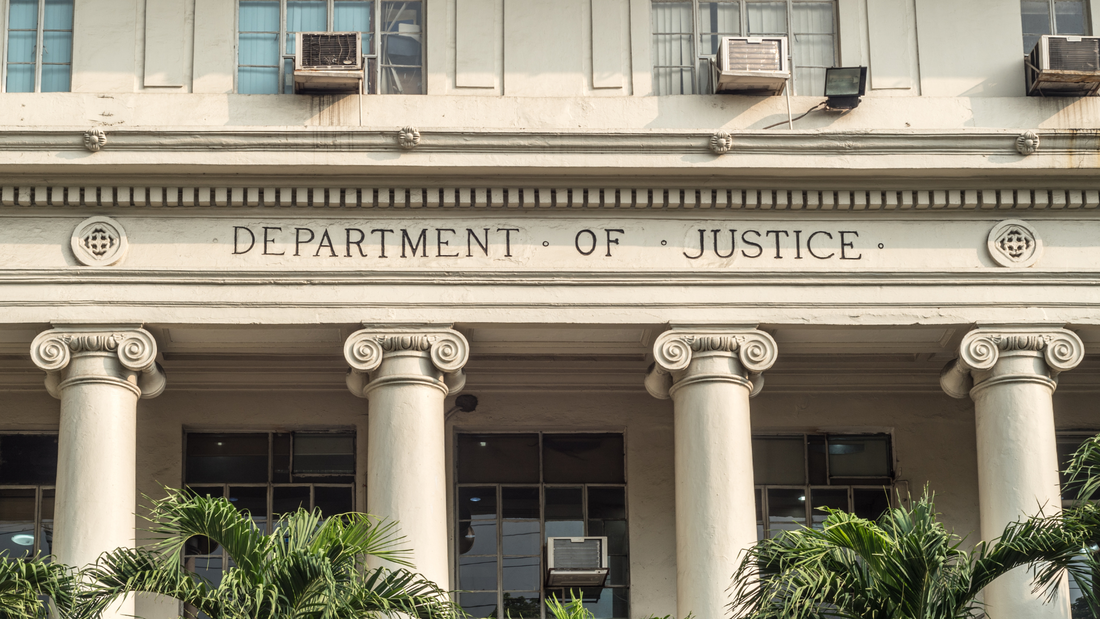


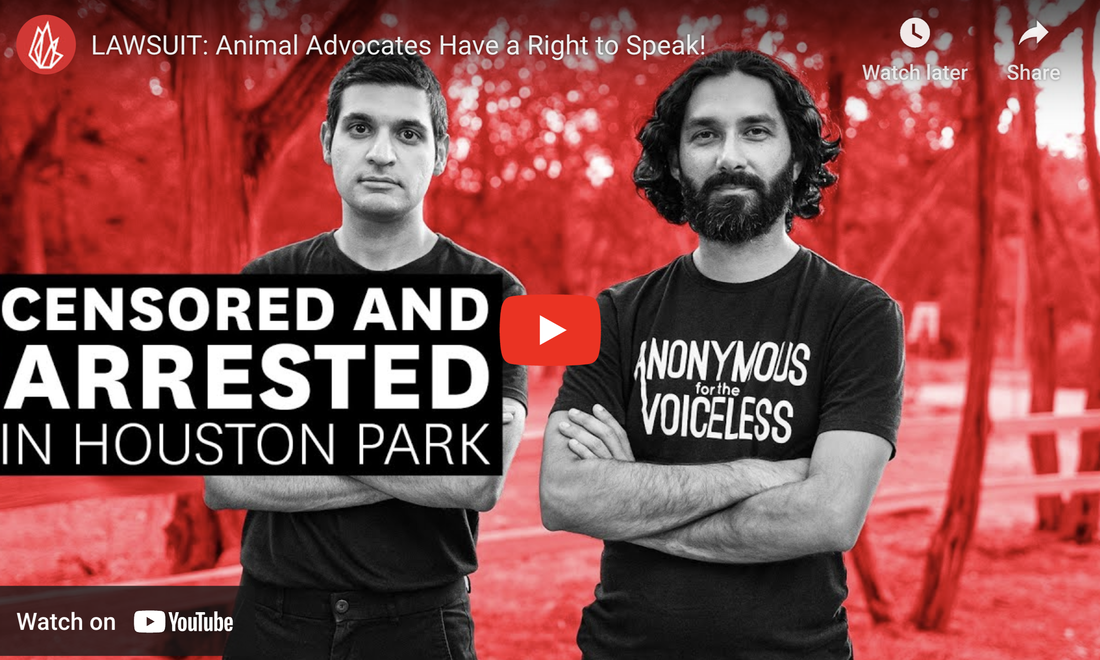
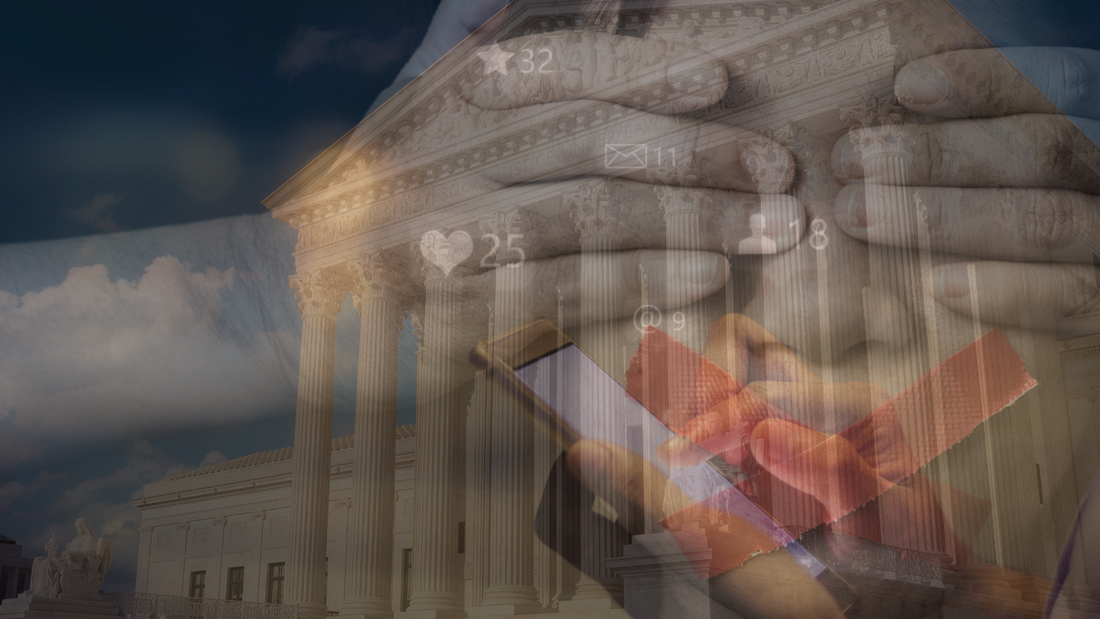
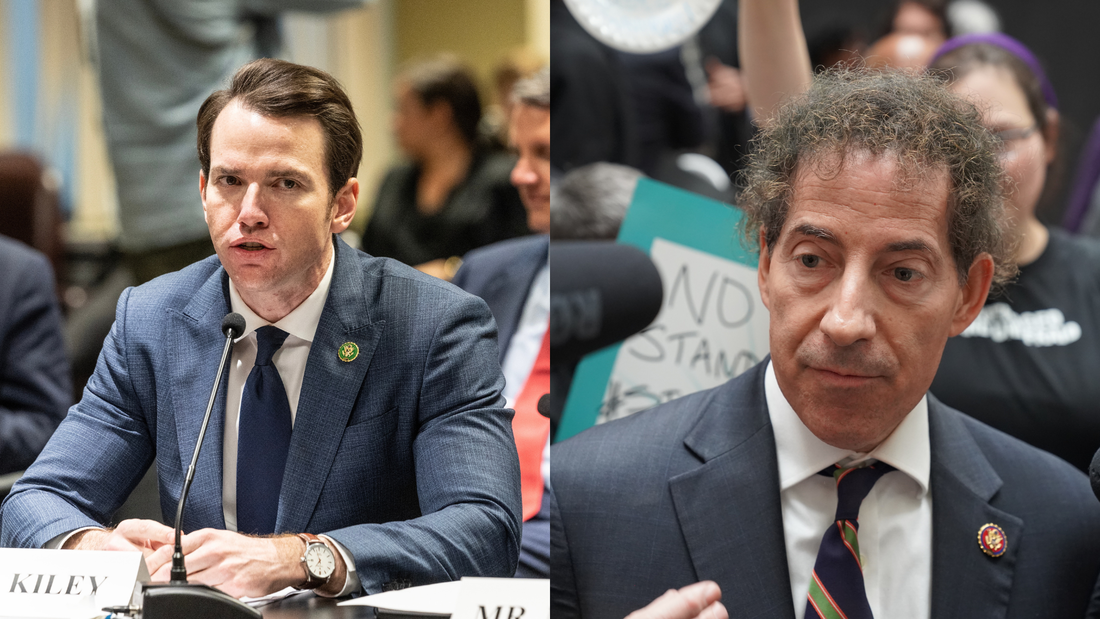
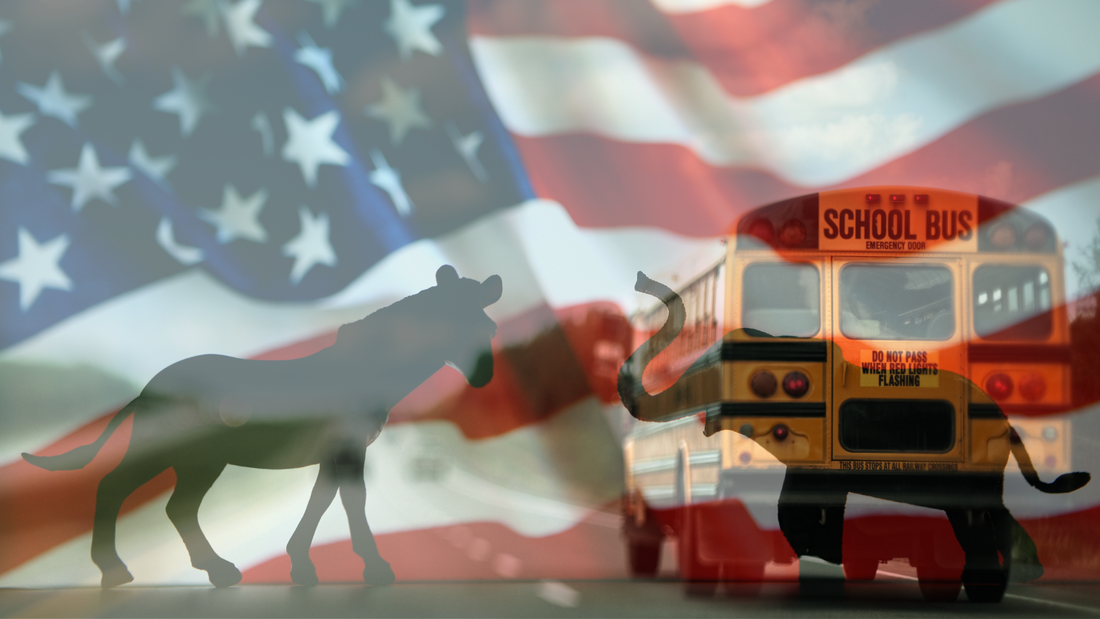

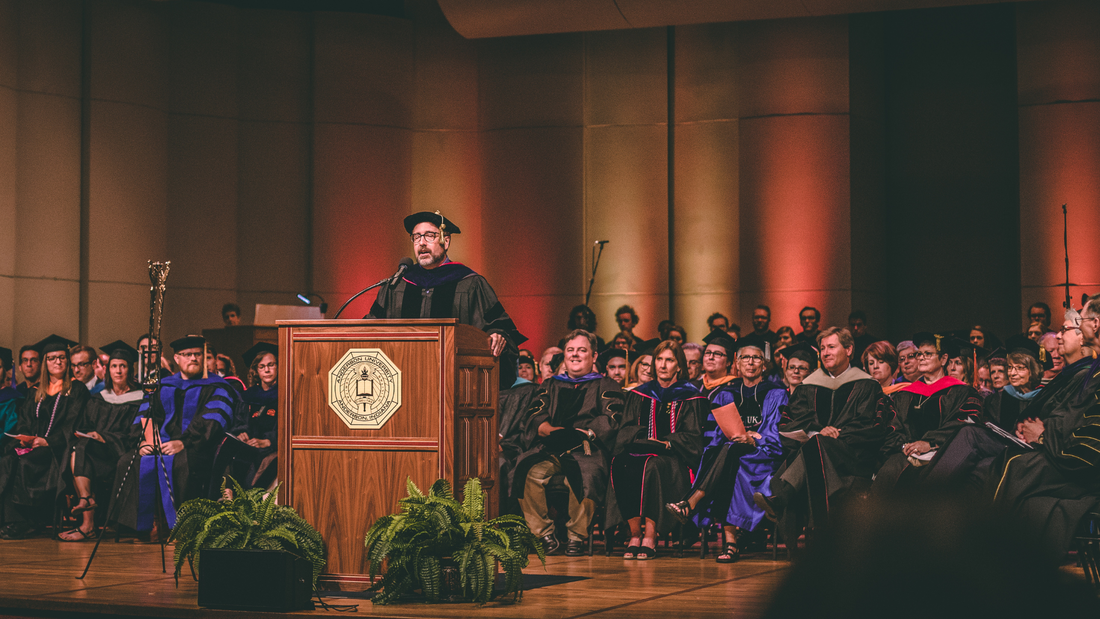
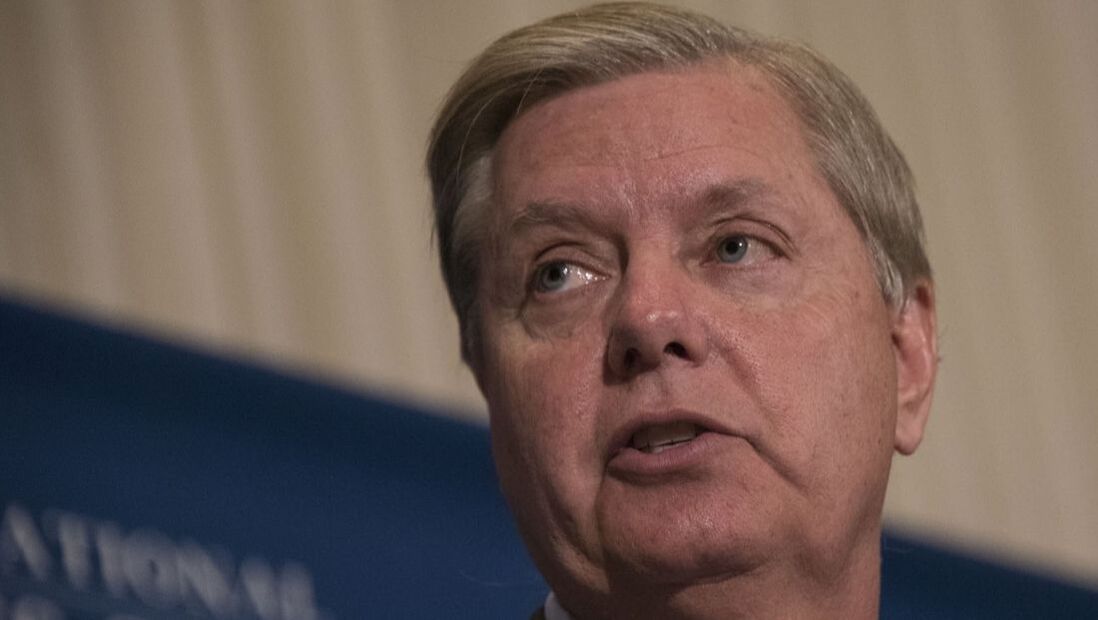

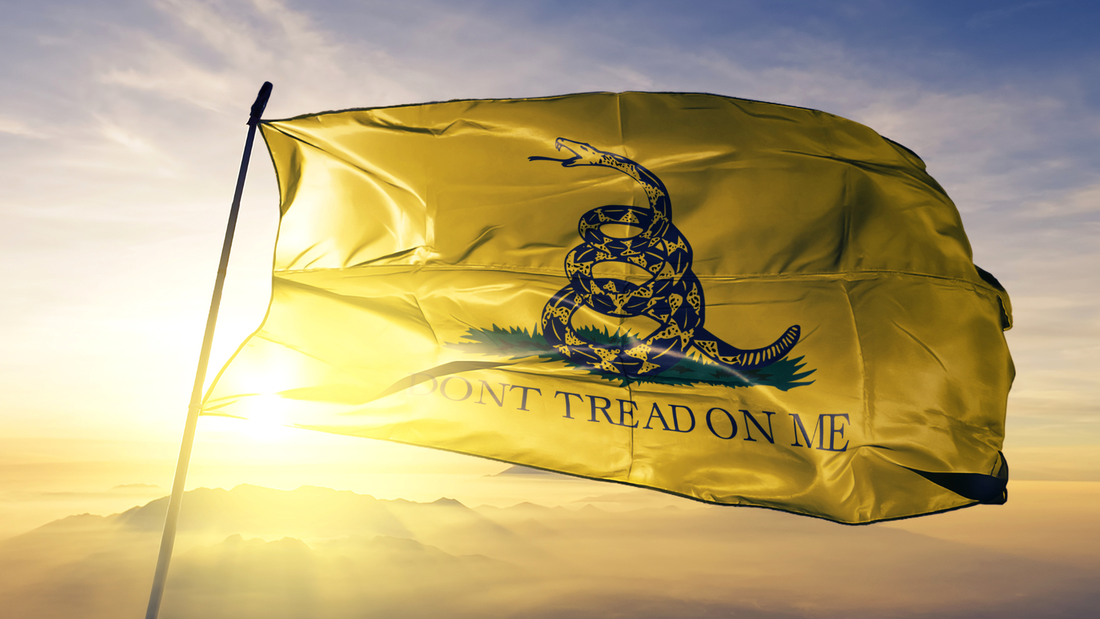
 RSS Feed
RSS Feed